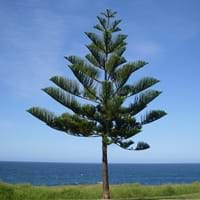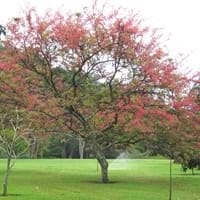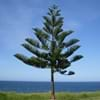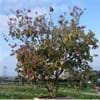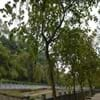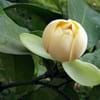Life Span
Perennial
Perennial
Type
Tree
Flowering Plants, Tree
Origin
Australia
China, South-Central United States
Types
not available
Not Available
Habitat
Subtropical forests
Lowland, Mixed deciduous forest, Roadsides
USDA Hardiness Zone
9-11
Not Available
AHS Heat Zone
11-1
Not Available
Sunset Zone
H1, H2, 17, 21, 22, 23, 24
Not Available
Habit
Pyramidal
Upright/Erect
Flower Color
Green
Pink, Yellow green
Flower Color Modifier
Bicolor
Bicolor
Fruit Color
Green
Not Available, White
Leaf Color in Spring
Dark Green
Dark Green
Leaf Color in Summer
Dark Green
Dark Green
Leaf Color in Fall
Dark Green
Dark Green
Leaf Color in Winter
Dark Green
Dark Green
Leaf Shape
Needle like
Pinnate
Plant Season
Spring, Summer, Fall, Winter
Spring, Summer, Fall
Sunlight
Full Sun, Partial Sun, Partial shade
Partial shade, Full Shade
Type of Soil
Loam, Sand
Loam
The pH of Soil
Acidic, Neutral, Alkaline
Acidic, Neutral, Alkaline
Soil Drainage
Well drained
Well drained
Tolerances
Drought, Salt, Soil Compaction
Pollution, Drought, Salt, Soil Compaction
Where to Plant?
Ground
Ground
How to Plant?
Tip cutting
Seedlings
Plant Maintenance
Medium
Medium
Watering Requirements
Allow to dry out slightly between watering
Requires regular watering
In Summer
Lots of watering
Lots of watering
In Spring
Moderate
Moderate
In Winter
Average Water
Average Water
Soil pH
Acidic, Neutral, Alkaline
Acidic, Neutral, Alkaline
Soil Type
Loam, Sand
Loam
Soil Drainage Capacity
Well drained
Well drained
Sun Exposure
Full Sun, Partial Sun, Partial shade
Partial shade, Full Shade
Pruning
Prune if you want to improve plant shape, Remove damaged leaves
Requires very little pruning
Fertilizers
All-Purpose Liquid Fertilizer, fertilize every 2-3 weeks while growing
All-Purpose Liquid Fertilizer
Pests and Diseases
Anthracnose, Branch Droop, Root rot, Yellow Leaves
Not Available
Plant Tolerance
Drought
Drought
Flowers
Insignificant
Yes
Flower Petal Number
Not Available
Single
Foliage Texture
Fine
Bold
Foliage Sheen
Glossy
Matte
Attracts
Not Available
Not Available
Allergy
Not Available
Not Available
Aesthetic Uses
Showy Purposes, Used as Christmas tree
Showy Purposes
Beauty Benefits
No Beauty Benefits
Not Available
Environmental Uses
Shelter for wildlife, Windbreak
Air purification
Medicinal Uses
Not Available
Not Available
Part of Plant Used
Whole plant, Wood
Whole plant
Other Uses
Used in Furniture
Used as Ornamental plant
Used As Indoor Plant
Yes
No
Used As Outdoor Plant
Yes
Yes
Garden Design
Container, Feature Plant, Houseplant, Screening / Wind Break, Shade Trees, Street Trees, Tropical
Feature Plant, Shade Trees, Street Trees, Topiary / Bonsai / Espalier
Botanical Name
ARAUCARIA heterophylla
Cassia grandis
Common Name
Norfolk Island Pine
Pink Shower Tree
In Hindi
नोरफोक द्वीप पाइन
Pink Shower Tree
In German
Norfolk-Insel Pine
Rosa Shower Tree
In French
Norfolk Île Pine
Cassia grandis
In Spanish
Norfolk Pine Island
Cassia grandis
In Greek
Νησί Νόρφολκ Pine
Ροζ δέντρο ντους
In Portuguese
Ilha Norfolk Pine
marimari
In Polish
Norfolk Pine
Różowy Prysznic Drzewo
In Latin
Insula Norfolk Pinus
Pink arbor imber
Phylum
Coniferophyta
Magnoliophyta
Class
Pinopsida
Magnoliopsida
Family
Araucariaceae
Fabaceae
Clade
Not Available
Angiosperms, Eudicots, Rosids
Tribe
Not Available
Not Available
Subfamily
Not Available
Not Available
Number of Species
Not Available
Difference Between Norfolk Island Pine and Cassia Grandis
If you are confused whether Norfolk Island Pine or Cassia Grandis are same, here are some features about those plants to help you choose better. Many people think that these two plants have the same characteristics, but one can see Norfolk Island Pine and Cassia Grandis Information and learn more about it. Fertilizers required for proper growth of Norfolk Island Pine are All-Purpose Liquid Fertilizer and fertilize every 2-3 weeks while growing, whereas for Cassia Grandis fertilizers required are All-Purpose Liquid Fertilizer. Hence, one should know the basic difference between Norfolk Island Pine and Cassia Grandis if you are planning to have them in your garden to enhance its beauty.
<
Flowering PlantsImportance of Norfolk Island Pine and Cassia Grandis
Want to have the most appropriate plant for your garden? You might want to know the importance of Norfolk Island Pine and Cassia Grandis. Basically, these two plants vary in many aspects. Compare Norfolk Island Pine and Cassia Grandis as they differ in many characteristics such as their life, care, benefits, facts, etc. Every gardener must at least have the slightest clue about the plants he wants to plant in his garden. Compare their benefits, which differ in many ways like facts and uses. The medicinal use of Norfolk Island Pine is Not Available whereas of Cassia Grandis is Not Available. Norfolk Island Pine has beauty benefits as follows: No Beauty Benefits while Cassia Grandis has beauty benefits as follows: No Beauty Benefits.
Compare Facts of Norfolk Island Pine vs Cassia Grandis
How to choose the best garden plant for your garden depending upon its facts? Here garden plant comparison will help you to solve this query. Compare the facts of Norfolk Island Pine vs Cassia Grandis and know which one to choose. As garden plants have benefits and other uses, allergy is also a major drawback of plants for some people. Allergic reactions of Norfolk Island Pine are Not Available whereas of Cassia Grandis have Not Available respectively. Having a fruit bearing plant in your garden can be a plus point of your garden. Norfolk Island Pine has no showy fruits and Cassia Grandis has no showy fruits. Also Norfolk Island Pine is not flowering and Cassia Grandis is flowering. You can compare Norfolk Island Pine and Cassia Grandis facts and facts of other plants too.
